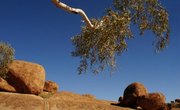
Geography, which is the study of the Earth's surface, focuses on elements such as the arrangement of physical features, climate, soil and vegetation. Geography influences the development of the people who occupy given areas. Humans respond and adapt to the conditions they encounter, developing patterns of behavior and customs to cope with dry deserts, arctic cold, high mountain ranges or the isolation of an island. In turn, humans interact with physical geography to change, enhance or destroy physical and ecological features. The study of human interaction with the land is called "cultural geography," and it includes economics, migrations, religion and language.
Topography
Topography is the study of reliefs; it describes the heights and shapes of geographical elements such as:
- rivers
- lakes
- cities
Natural barriers such as mountain ranges, oceans and large deserts limit human travel and isolate populations, thus restricting cultural exchanges. Island nations, such as Japan, were long isolated from other cultures. This fostered the development of rich, unique cultures. Mountains and rocky plateaus reduce the amount of land available for agriculture, while level grasslands offer rich soils for raising crops. This affects the extent that agriculture can spread in a country.
Bodies of Water
Large bodies of water restricted access to other cultures until humans devised ships capable of sailing over large distances. After that, coastal areas became hubs of cultural exchange. Some examples of countries that utilized ships to spread their culture include the colonizing European nations of Great Britain, Spain and Portugal in the 1500s and 1600s. Also, rivers make good "highways" for travel and cultural exchange; however, if rivers are swift and hard to navigate, they can isolate populations. The spread of cultures from their areas of origin to other localities is called "cultural diffusion."
Climate
Climate shapes what sort of agriculture is possible in a given area, how people dress, what sort of dwellings they build and how easily they travel. In large areas of the Sahara Desert in Africa, travel depends on the location of water and the availability of drought-tolerant beasts of burden such as camels. Agriculture is possible at oases with low population densities and isolated villages. In the severe winter climate of Finland, the culture of the Sami people centered around the life cycle of reindeer herds, their main source of food, resulting in a nomadic life style.
Vegetation
In the modern world, cultural diffusion is on the increase due to better transportation and improved methods of communication. However, in some areas ecosystems with impenetrable vegetation such as tropical jungles still harbor remote primitive cultures. The National Geographic Society estimates that more than 100 "uncontacted tribes" exist worldwide in South America, Papua New Guinea and the Indian Ocean. Contact with these tribes occurs when loggers, miners, colonists, ranchers and oil companies construct roads into formerly inaccessible areas.
References
- The Free Dictionary: Geography
- New York State Education: Culture: A Geographical Perspective
- Merriam-Webster Dictionary: Topography
- Influences of Geographic Environment; Ellen Churchill Semple
- Art, Design and Visual Thinking: Japan: Historic Background; Charlotte Jirousek
- National Geographic Education: Europe: Human Geography
About the Author
Carolyn Csanyi began writing in 1973, specializing in topics related to plants, insects and southwestern ecology. Her work has appeared in the "American Midland Naturalist" and Greenwood Press. Csanyi holds a Doctor of Philosophy in biology from the University of Wisconsin at Madison.
